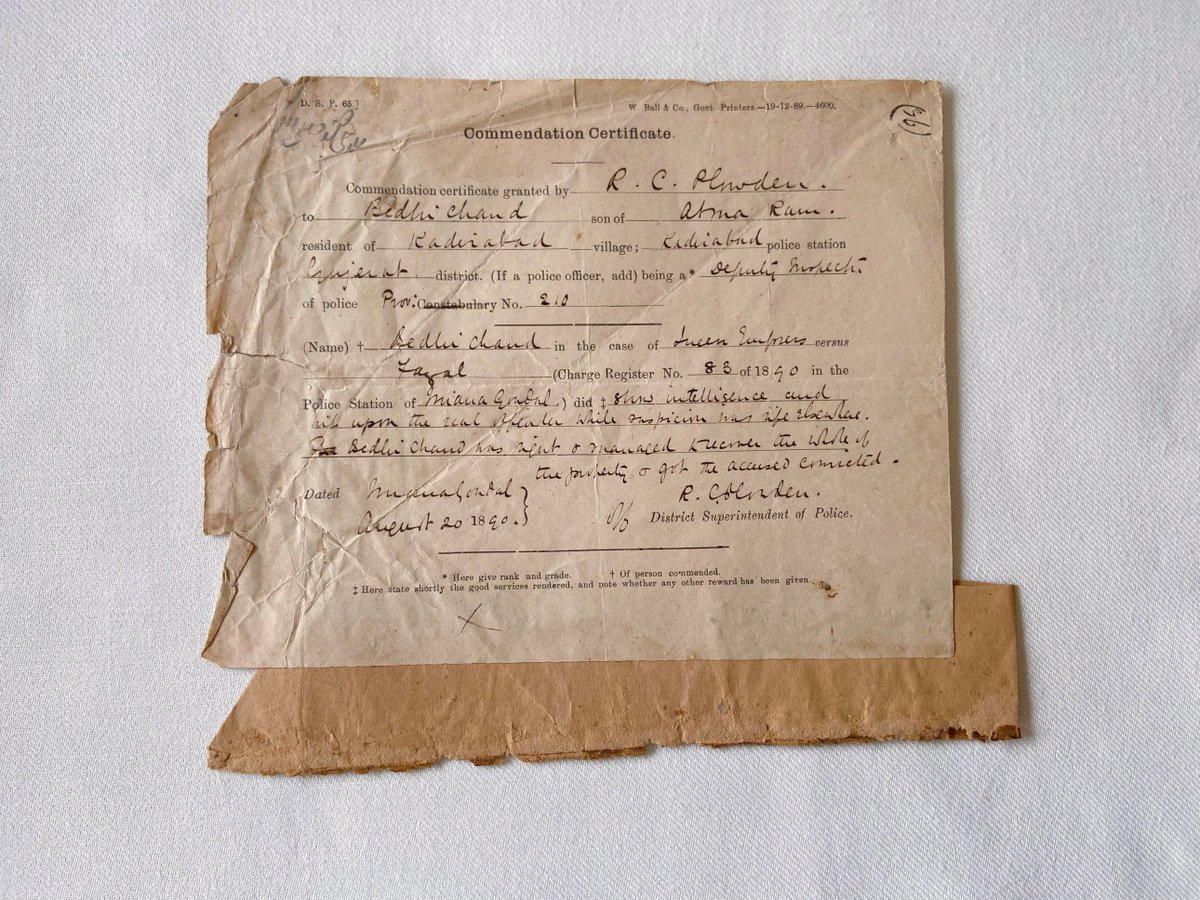My piece today in @Mint_Lounge on the 1897 bubonic plague and a great-great grandfather, Deputy Inspector Bidhi Chand, who found himself on Plague Duty in the Punjab. A thread https://bit.ly/2Sby0vo ">https://bit.ly/2Sby0vo&q...
On 23 September 1896, the first “official"case of the bubonic plague in India was reported by an Indian physician named A.G. Viegas from a house near Masjid Bridge in Mandvi district, Bombay Presidency.
The Punjab region—suffering recurrently from outbreaks of malaria, smallpox and cholera—was one of the worst affected. The first case occurred in Khatkar Kalan village on 17 October 1897, and until 1899, the plague remained confined to the Jullundur and Hoshiarpur districts.
It is here, in these early affected areas, that my great-great grandfather, Lala Bidhi Chand, served his “Plague Duty" as a deputy inspector with the Imperial Indian Police. The son of Atma Ram, a Pathan of Qadirabad, district Gujarat, Punjab (in present-day Pakistan) . . .
His documents show him serving across the Punjab, in the districts of Sargodha, Mandi Bahauddin, Gujranwala, Jhelum and Rawalpindi. He was appointed to Census Duty in 1891 and, more relevantly, to Plague Duty in 1898.
According to the commendation certificate for Bidhi Chand’s work from 2 March-13 July 1898, “The duty was of an exceedingly trying and delicate nature, and involved considerable hardship, exposure and personal risk."
But what did it really entail? Prof. Sasha Tandon explains that infected areas [were] divided into divisions of 100 villages each, supervised by dpty commissioner, asst dpty commissioner, div officer, civil surgeon & medical officer. Bidhi Chand would have been part of this body.
Dated to the exact year and regions where Lala Bidhi Chand served in 1898, a report from the deputy sanitary commissioner of Punjab, surgeon-captain C.H. James, lists the names, ages and travel histories of each person in every village and district who contracted the plague.
Historian Myron Echenberg writes in Plague Ports: The Global Urban Impact Of Bubonic Plague, 1894-1901, “Between (the) plague’s arrival in 1896 and 1921, an estimated 12 million Indians lost their lives, compared with 3 million in the rest of the world combined."
Eventually, the govt sought aid of Ukrainian bacteriologist, Waldemar Mordecai Haffkine, credited for the cholera vaccine. The peak of plague mortality passed in 1907, with over 1.3 million deaths in a single year across India; the disease disappeared from the region only by 1920
It is a complicated inheritance to be left with questions about an ancestor’s life and work, and I wish I knew more about Lala Bidhi Chand than the information I have foraged and deduced through archival material. To my knowledge, no member of his family was affected by plague.
After plague duty, Bidhi Chand went on to serve for six more years, retiring in 1904 with glowing recommendations from his superior officers. According to a sanad, a deed dated to the same year, he received lands on the Jhelum canal for his services to the government.
Note: The two pages from the & #39;Report on the outbreak of plague in the Jullundur and Hoshiarpur districts of the Punjab, 1897-98& #39; by Deputy Sanitary Commissioner of Punjab, surgeon-captain C.H. James, belong to the Wellcome Collection, London.
This thread is only about the duties and documents of Lala Bidhi Chand, but do read the entire piece to learn about the stark parallels between the 19th century bubonic plague and covid-19

 Read on Twitter
Read on Twitter







